Camille Henrot
Days are Dogs
18 Oct 2017 - 07 Jan 2018
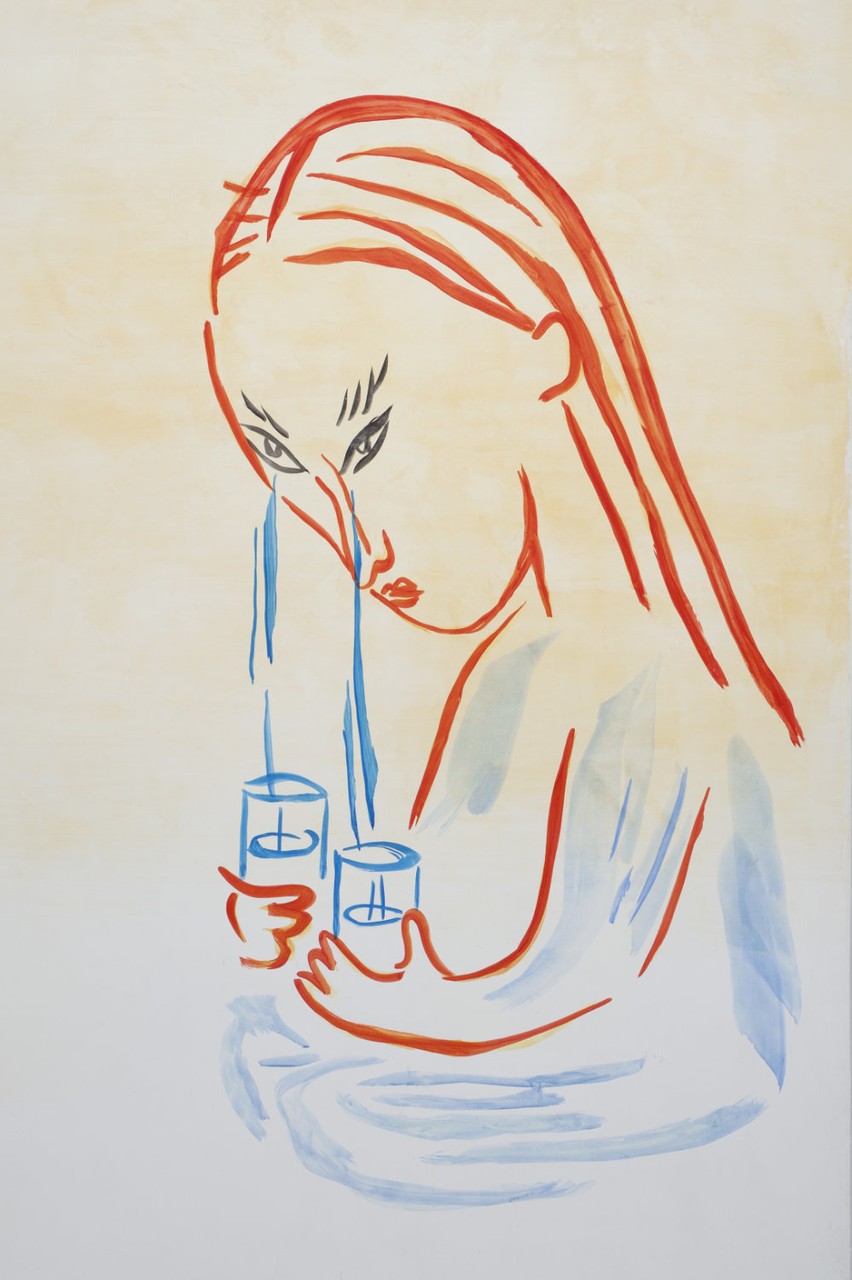
Monday
Camille Henrot, A Long Face (detail), 2016, fresco, 166.54 x 157.48 inches (423 x 400 cm), photo: Daniele Molajoli, courtesy of the artist, Fondazione Memmo (Rome) and kamel mennour (Paris/London) ; König Galerie (Berlin) ; Metro Pictures (New York). © ADAGP, Paris 2017
Camille Henrot, A Long Face (detail), 2016, fresco, 166.54 x 157.48 inches (423 x 400 cm), photo: Daniele Molajoli, courtesy of the artist, Fondazione Memmo (Rome) and kamel mennour (Paris/London) ; König Galerie (Berlin) ; Metro Pictures (New York). © ADAGP, Paris 2017
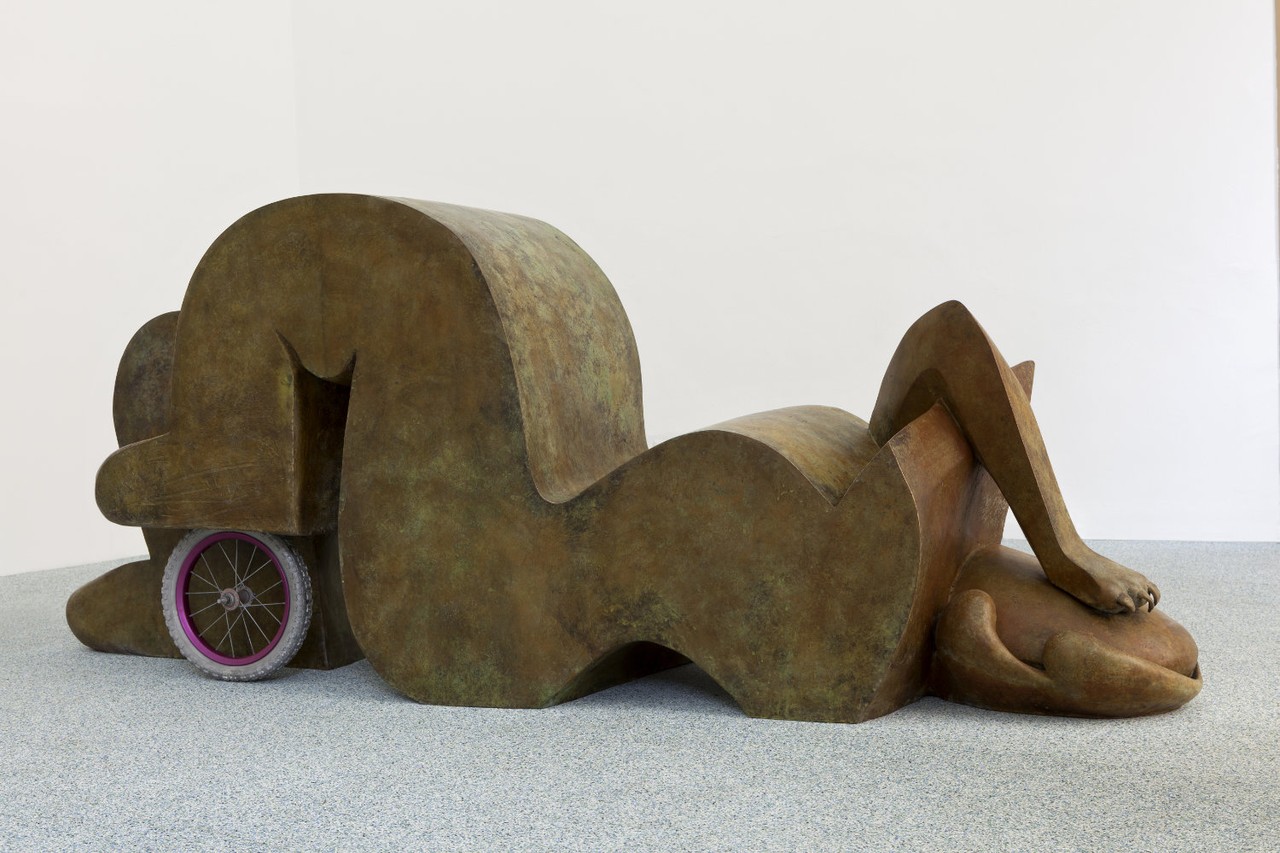
Monday
Camille Henrot, Derelitta, 2016, bronze, aluminum, iron, 23.62 x 98.43 x 4,64 inches (60 x 250 x 121 cm), photo: Daniele Molajoli,© ADAGP, Paris 2017, courtesy of the artist, Fondazione Memmo (Rome) and kamel mennour (Paris/London) ; König Galerie (Berlin) ; Metro Pictures (New York). © ADAGP, Paris 2017
Camille Henrot, Derelitta, 2016, bronze, aluminum, iron, 23.62 x 98.43 x 4,64 inches (60 x 250 x 121 cm), photo: Daniele Molajoli,© ADAGP, Paris 2017, courtesy of the artist, Fondazione Memmo (Rome) and kamel mennour (Paris/London) ; König Galerie (Berlin) ; Metro Pictures (New York). © ADAGP, Paris 2017
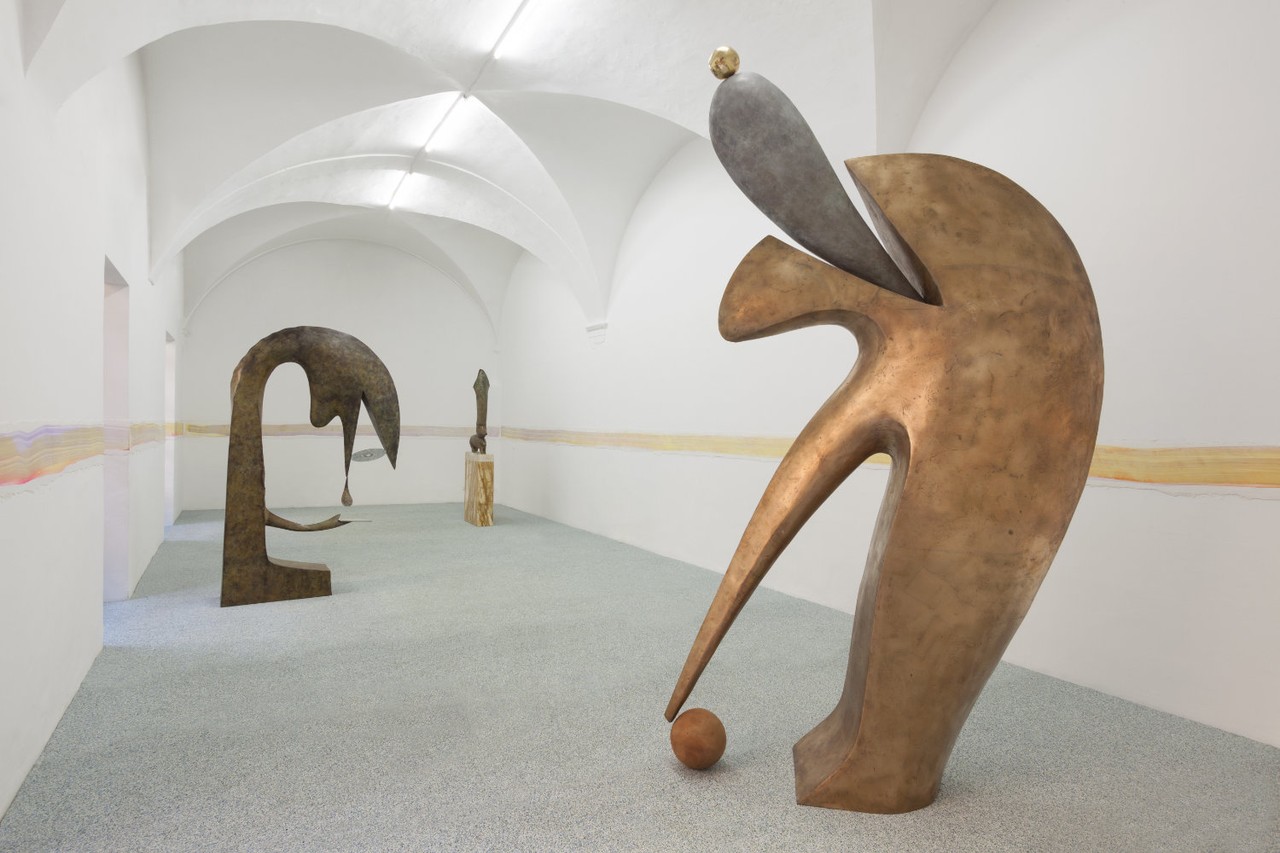
Monday
Camille Henrot, exhibition view Monday, Fondazione Memmo, Rome, 2016, photo: Daniele Molajoli, courtesy of the artist, Fondazione Memmo (Rome) and kamel mennour (Paris/London); König Galerie (Berlin) ; Metro Pictures (New York). © ADAGP, Paris 2017
Camille Henrot, exhibition view Monday, Fondazione Memmo, Rome, 2016, photo: Daniele Molajoli, courtesy of the artist, Fondazione Memmo (Rome) and kamel mennour (Paris/London); König Galerie (Berlin) ; Metro Pictures (New York). © ADAGP, Paris 2017
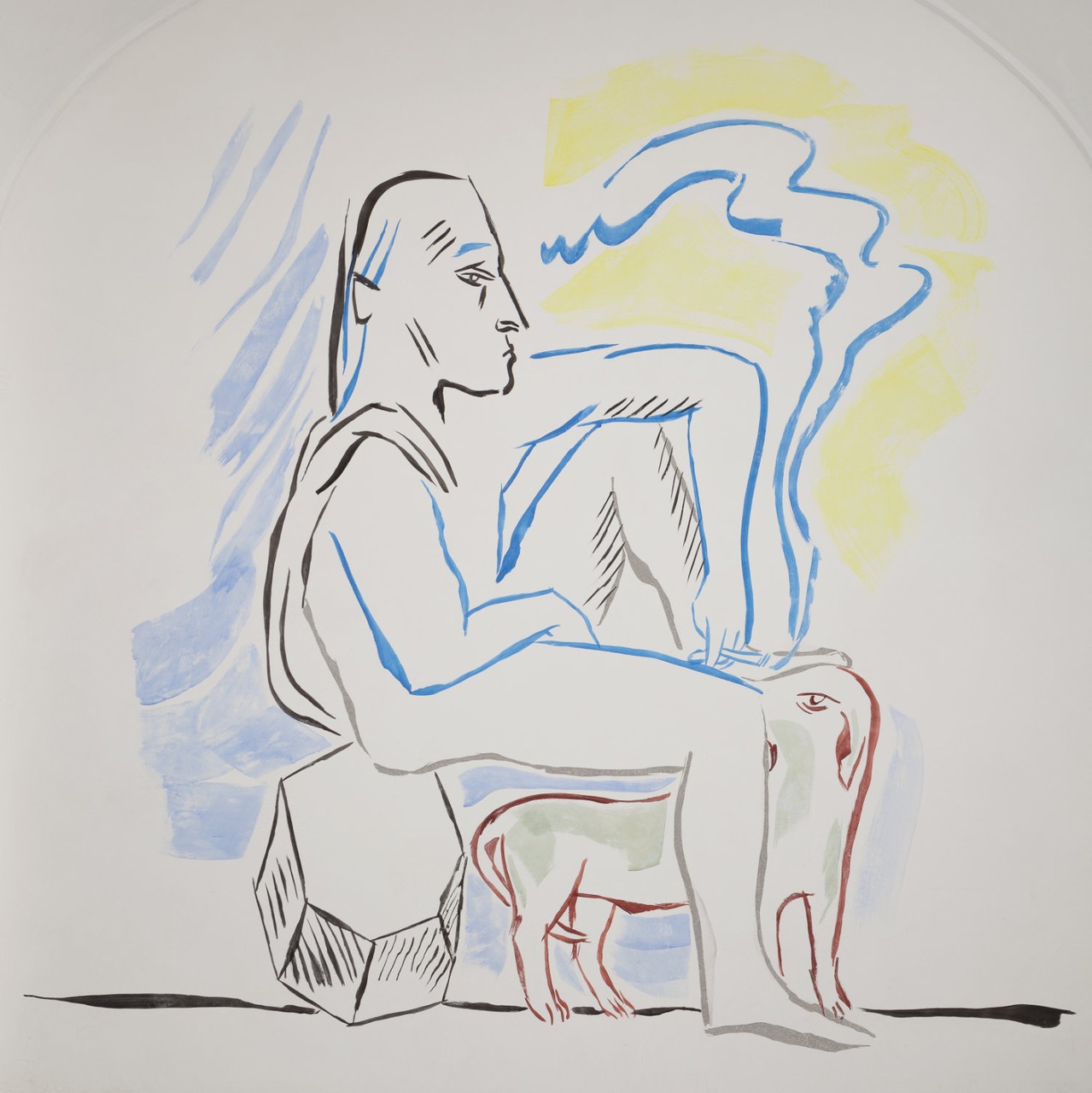
Monday
Camille Henrot, It is a Poor Heart That Never Rejoices, 2016, fresco, 166.54 x 157.87 inches (423 x 401 cm), photo: Daniele Molajoli, courtesy of the artist, Fondazione Memmo (Rome) and kamel mennour (Paris/London) ; König Galerie (Berlin) ; Metro Pictures (New York). © ADAGP, Paris 2017
Camille Henrot, It is a Poor Heart That Never Rejoices, 2016, fresco, 166.54 x 157.87 inches (423 x 401 cm), photo: Daniele Molajoli, courtesy of the artist, Fondazione Memmo (Rome) and kamel mennour (Paris/London) ; König Galerie (Berlin) ; Metro Pictures (New York). © ADAGP, Paris 2017
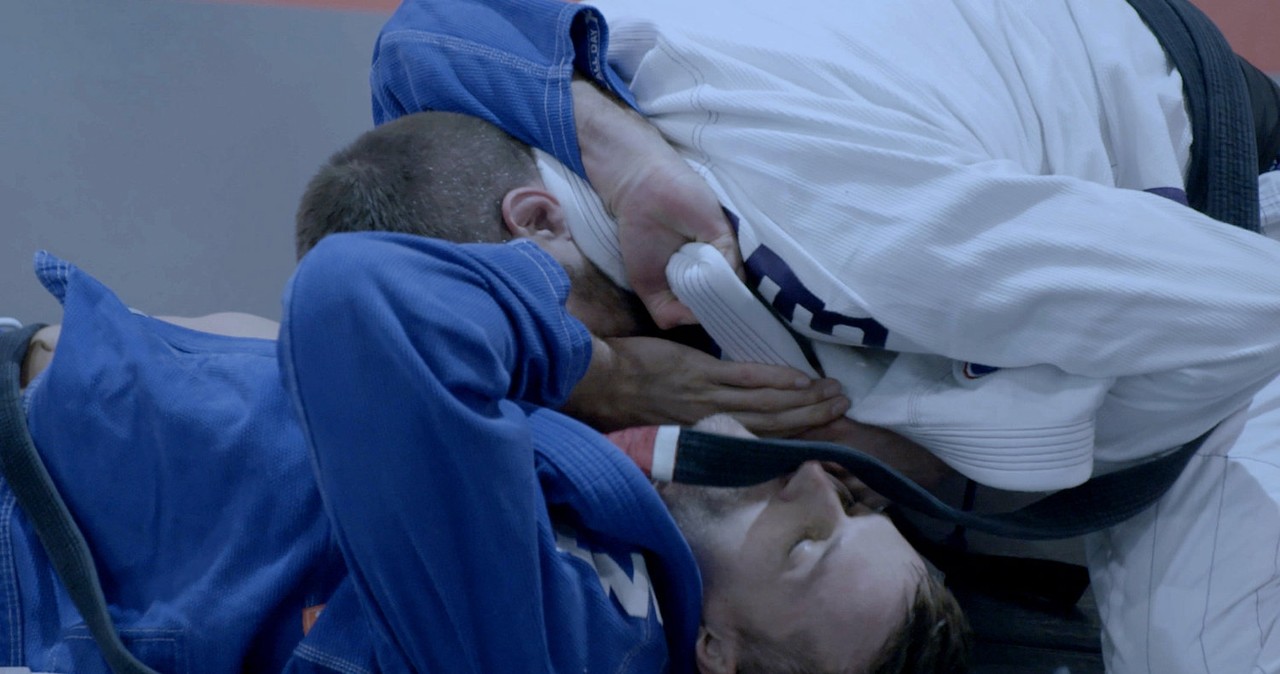
Tuesday
Camille Henrot, Tuesday (still), 2017, video, sound, 20 min 50 sec, courtesy of the artist and kamel mennour (Paris/London); König Galerie (Berlin) ; Metro Pictures (New York).© ADAGP, Paris 2017
Camille Henrot, Tuesday (still), 2017, video, sound, 20 min 50 sec, courtesy of the artist and kamel mennour (Paris/London); König Galerie (Berlin) ; Metro Pictures (New York).© ADAGP, Paris 2017

Tuesday
Camille Henrot, Tuesday (still), 2017, video, sound, 20 min 50 sec, courtesy of the artist and kamel mennour (Paris/London); König Galerie (Berlin) ; Metro Pictures (New York). © ADAGP, Paris 2017
Camille Henrot, Tuesday (still), 2017, video, sound, 20 min 50 sec, courtesy of the artist and kamel mennour (Paris/London); König Galerie (Berlin) ; Metro Pictures (New York). © ADAGP, Paris 2017

Tuesday
Camille Henrot, Ring, 2015, Bronze ring, wood pedestal, 3 3/8 x 2 x 1/2 inches (8,6 x 5,1 x 1,3 cm) ring, 5 1/2 x 1/16 inches (14 x 2 cm) stand, 50 x 9 x 9 inches (127 x 22,9 x 22,9 cm) pedestal, courtesy of the artist and Metro Pictures (New York); kamel mennour (Paris/London) ; König Galerie (Berlin). © ADAGP, Paris 2017
Camille Henrot, Ring, 2015, Bronze ring, wood pedestal, 3 3/8 x 2 x 1/2 inches (8,6 x 5,1 x 1,3 cm) ring, 5 1/2 x 1/16 inches (14 x 2 cm) stand, 50 x 9 x 9 inches (127 x 22,9 x 22,9 cm) pedestal, courtesy of the artist and Metro Pictures (New York); kamel mennour (Paris/London) ; König Galerie (Berlin). © ADAGP, Paris 2017
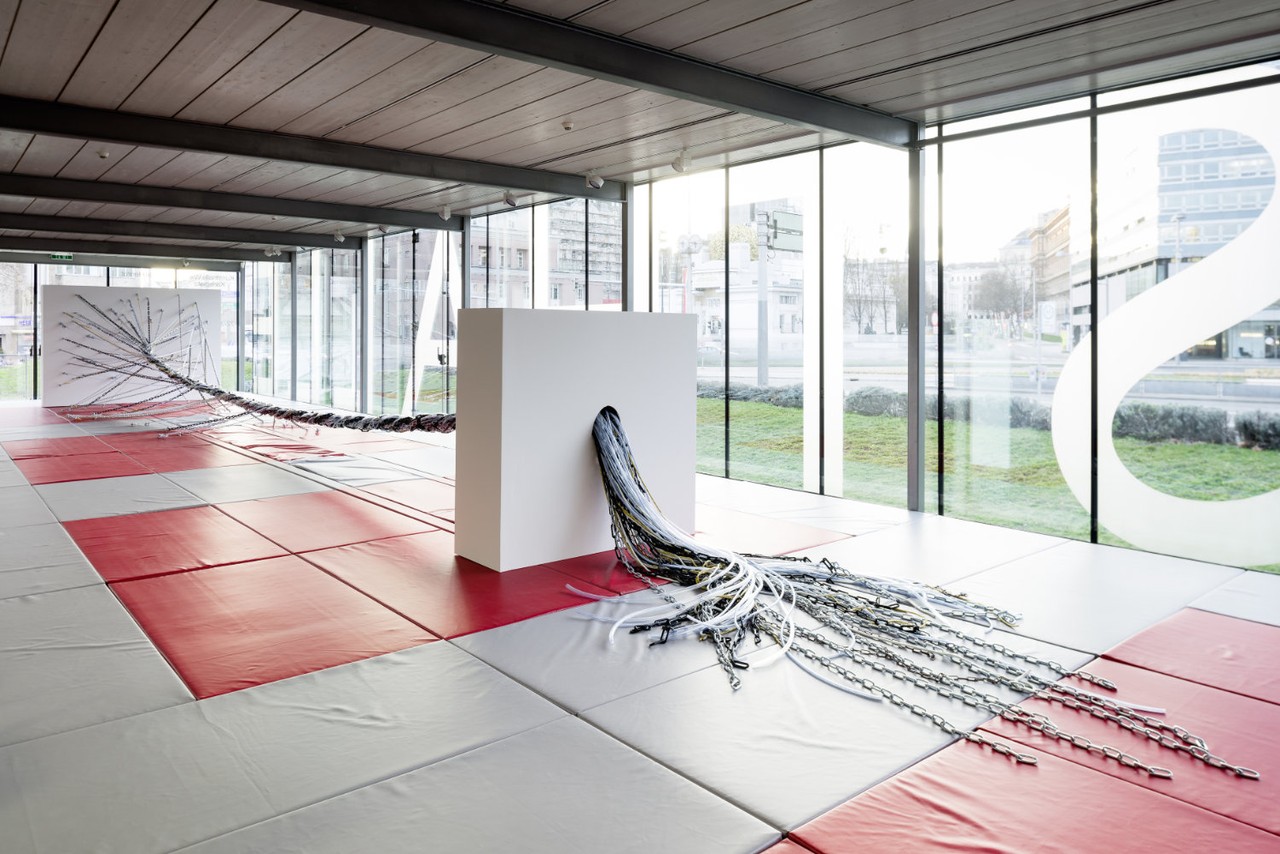
Tuesday
Camille Henrot, Tug of War, 2017, metal and plastic chains, rubber hoses, textile ropes, wood on steel construction, jiu jitsu mats, 88.58 x 708.66 x 118.1 inches (225 x 1800 x 300 cm), photo: Jorit Aust, courtesy of the artist, Kunsthalle Wien (Wien) and kamel mennour (Paris/London) ; König Galerie (Berlin); Metro Pictures (New York). © ADAGP, Paris 2017
Camille Henrot, Tug of War, 2017, metal and plastic chains, rubber hoses, textile ropes, wood on steel construction, jiu jitsu mats, 88.58 x 708.66 x 118.1 inches (225 x 1800 x 300 cm), photo: Jorit Aust, courtesy of the artist, Kunsthalle Wien (Wien) and kamel mennour (Paris/London) ; König Galerie (Berlin); Metro Pictures (New York). © ADAGP, Paris 2017
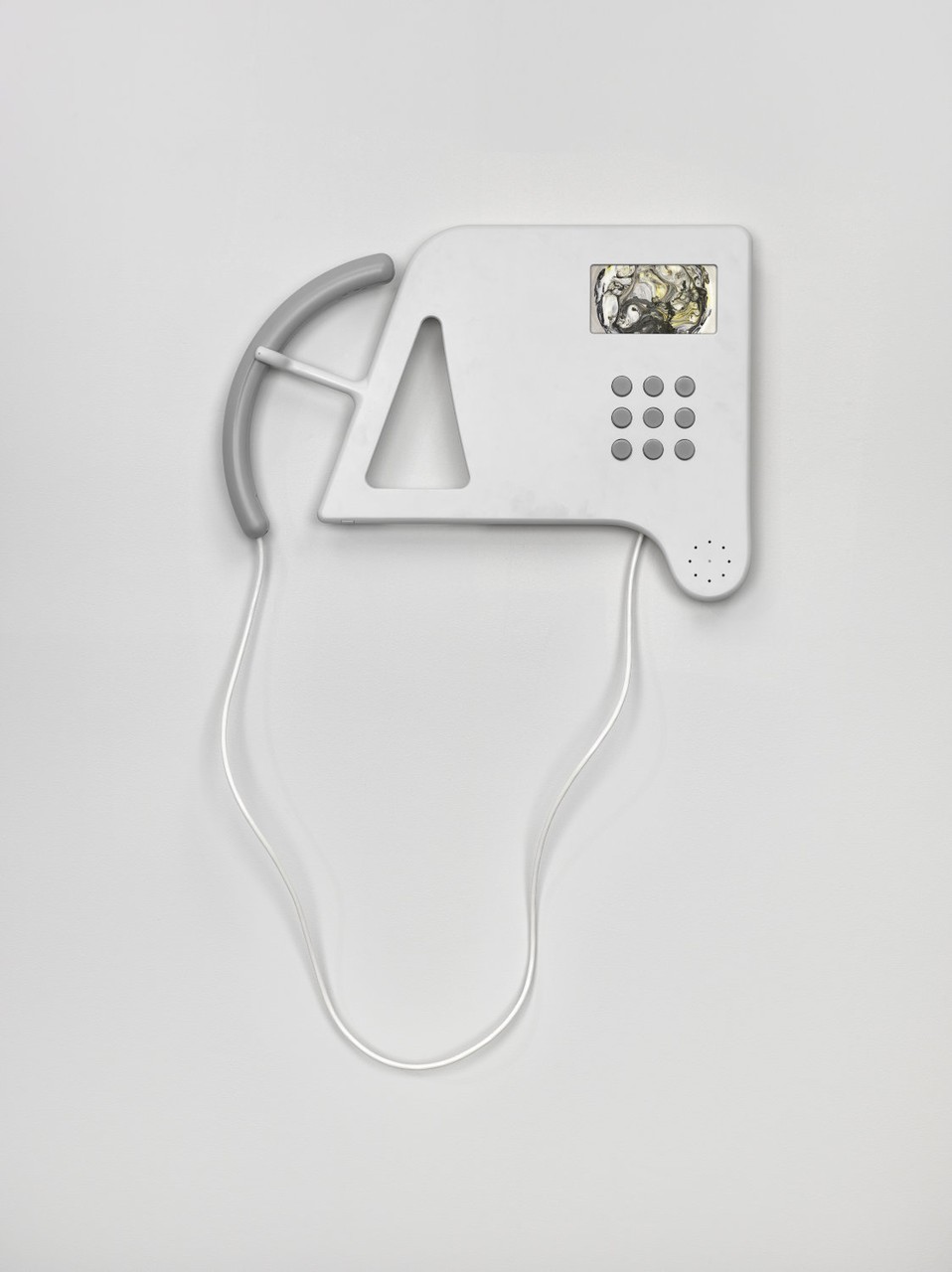
Wednesday
Camille Henrot, Splendid Isolation, 2015, resin cast with video and telephone components, 14 3/8 x 19 3/8 x 2 1/4 inches (36.5 x 49.2 x 5.7 cm) phone, 35 3/8 x 19 3/8 x 2 1/4 inches (89.9 x 49.2 x 5.7 cm) overall, courtesy of the artist and Metro Pictures (New York); kamel mennour (Paris/London); König Galerie (Berlin). © ADAGP, Paris 2017
Camille Henrot, Splendid Isolation, 2015, resin cast with video and telephone components, 14 3/8 x 19 3/8 x 2 1/4 inches (36.5 x 49.2 x 5.7 cm) phone, 35 3/8 x 19 3/8 x 2 1/4 inches (89.9 x 49.2 x 5.7 cm) overall, courtesy of the artist and Metro Pictures (New York); kamel mennour (Paris/London); König Galerie (Berlin). © ADAGP, Paris 2017
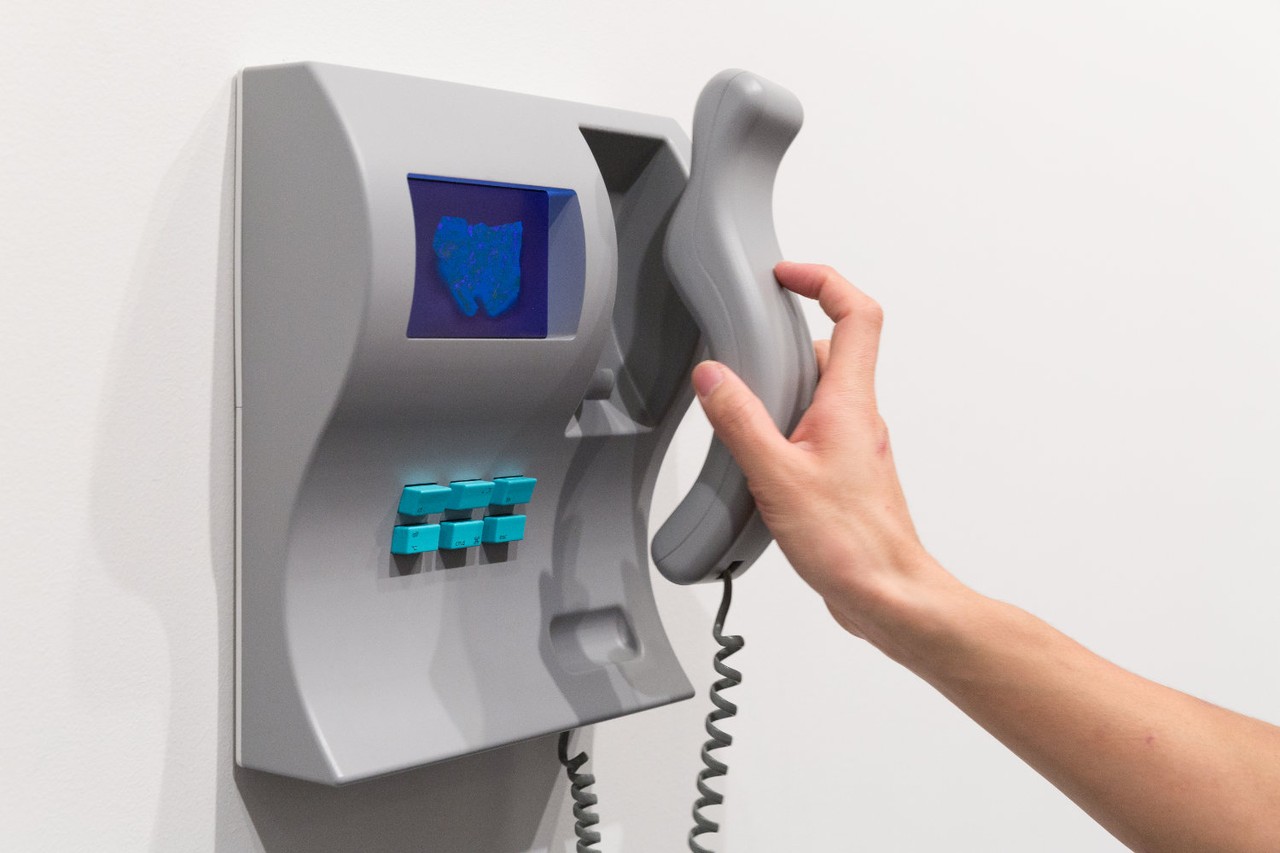
Wednesday
Camille Henrot, Is he cheating, resin cast with video and telephone component, 37 7/8 x 9 1/2 x 3 1/4 inches (96.2 x 24.1 x 8.3 cm), courtesy of the artist and Metro Pictures (New York); kamel mennour (Paris/London); König Galerie (Berlin). © ADAGP, Paris 2017.
Camille Henrot, Is he cheating, resin cast with video and telephone component, 37 7/8 x 9 1/2 x 3 1/4 inches (96.2 x 24.1 x 8.3 cm), courtesy of the artist and Metro Pictures (New York); kamel mennour (Paris/London); König Galerie (Berlin). © ADAGP, Paris 2017.
"CARTE BLANCHE" TO CAMILLE HENROT
Days are Dogs
18 October 2017 - 7 January 2018
Palais de Tokyo is giving its entire exhibition space to Camille Henrot (born in Paris in 1978, lives in New York) for the third installment of its series of cartes blanches exhibitions, which began in 2013 with Philippe Parreno and continued in 2016 with Tino Sehgal. The carte blanche offered to Henrot — winner of the Silver Lion at the 55th Venice Biennale (2013) as well as the Nam June Paik Award (2014) and the Edward Munch Award (2015) — will be an occasion to discover the ever-expanding fields of inquiry that influence her idiosyncratic sculptures, drawings, video and installations.
Titled “Days are Dogs”, Henrot’s exhibition questionsthe relationships of authority and fiction that determineour existence, and is organized around one of the mostfoundational structures in our lives – the week.
Years are measured by the journey of the Earth around the Sun; months derive from the position of the Moon; days correspond to a rotation of the Earth. The week, by contrast, is a fiction, a human invention. Yet that does not diminish its emotional and psychological effects. We experience it as a narrative cycle, structured by the particular qualities of its component days.
Each room of the exhibition evokes a day of the week – an open world where conventions, emotions, and individual freedom are playfully confronted with one another.
Our days take their names from the cosmos and mythology – the Moon for Monday, the god Thor for Thursday, the god Saturn for Saturday – and the viewer is invited into a new human mythology, both contemporary and timeless: a mythology from the Internet age, where emotions are markedby each day’s hashtag.
The exhibition as a whole operates through the composition and recomposition of archipelagoes of artworks – works by Camille Henrot herself, some of them presented for the first time, as well as those by international artists, broadening the scope of each day.
Curator: Daria de Beauvais
- - -
“With “Days are Dogs”, I look to explore the concept of the week as a human invention (in contrast to solar days and years or lunar months) that has colonized the entire globe’s conception of time, imposing a standard that is mobilized in the interests of productivity. It is a construct that both fortifies and alienates us. As a repetitive unit of time, the week is both reassuring in its predictability and disquieting in its creation of obligations – it is completely arbitrary and yet totally valid. It’s a story we’re told, like the stories we tell to children. We, as human beings, love to give ourselves over to a system we cherish because it is familiar. At the same time, this submission gives rise to the perversity of dependency – the desire to be constrained.
A system can only ever be replaced by another system. I am interested in the over-application of a system’s rules to free oneself from the very rules by which that system operates, thereby enabling subjective, personal logics to thrive. As any structuring of time is a structuring of obligations, needs, and desires, I use the banal, semi-unconscious construct of the week to draw connections between intimate logics and large societal problems: a flower becomes a reflection on compensation and on gender and class inequalities (Jewels from the Personal Collection of Princess Salimah Aga Khan), a crinkling candy wrapper expresses a nameless worry as it opens (Is He Cheating?). To cite Roland Barthes, “it is when something ‘goes without saying’ that it needs to be looked at closely – and it then emerges that ‘what goes without saying’ is in fact comprised of a number of unanswered questions.”
By using the temporal structure of the week, this exhibition seeks to defamiliarize many of the obligations we have grown so accustomed to as to consider natural. While the arbitrary yet manifold significations of each day provide us with external structure, a shared field of meanings coming from mythology, and thus allow us to detach ourselves from the problems of making decisions regarding what to do with our days, with our lives, the rhythm of the week imposes obligations on us: to go out for drinks, to consume culture, to sleep, etc. We are constantly assaulted by contradictory directives to obey our desires and obligations as friends, as parents, as dog owners, runners, smokers, citizens, empathetic humans, and lovers, not to mention the caterwauling agglomeration of desires addressed to us by the digital sphere. As such, my “carte blanche” is a meditation on dependency and freedom, on how to live with compromise and alterations to our ideals and yet to maintain our idealism and hope for change.“
Camille Henrot
Days are Dogs
18 October 2017 - 7 January 2018
Palais de Tokyo is giving its entire exhibition space to Camille Henrot (born in Paris in 1978, lives in New York) for the third installment of its series of cartes blanches exhibitions, which began in 2013 with Philippe Parreno and continued in 2016 with Tino Sehgal. The carte blanche offered to Henrot — winner of the Silver Lion at the 55th Venice Biennale (2013) as well as the Nam June Paik Award (2014) and the Edward Munch Award (2015) — will be an occasion to discover the ever-expanding fields of inquiry that influence her idiosyncratic sculptures, drawings, video and installations.
Titled “Days are Dogs”, Henrot’s exhibition questionsthe relationships of authority and fiction that determineour existence, and is organized around one of the mostfoundational structures in our lives – the week.
Years are measured by the journey of the Earth around the Sun; months derive from the position of the Moon; days correspond to a rotation of the Earth. The week, by contrast, is a fiction, a human invention. Yet that does not diminish its emotional and psychological effects. We experience it as a narrative cycle, structured by the particular qualities of its component days.
Each room of the exhibition evokes a day of the week – an open world where conventions, emotions, and individual freedom are playfully confronted with one another.
Our days take their names from the cosmos and mythology – the Moon for Monday, the god Thor for Thursday, the god Saturn for Saturday – and the viewer is invited into a new human mythology, both contemporary and timeless: a mythology from the Internet age, where emotions are markedby each day’s hashtag.
The exhibition as a whole operates through the composition and recomposition of archipelagoes of artworks – works by Camille Henrot herself, some of them presented for the first time, as well as those by international artists, broadening the scope of each day.
Curator: Daria de Beauvais
- - -
“With “Days are Dogs”, I look to explore the concept of the week as a human invention (in contrast to solar days and years or lunar months) that has colonized the entire globe’s conception of time, imposing a standard that is mobilized in the interests of productivity. It is a construct that both fortifies and alienates us. As a repetitive unit of time, the week is both reassuring in its predictability and disquieting in its creation of obligations – it is completely arbitrary and yet totally valid. It’s a story we’re told, like the stories we tell to children. We, as human beings, love to give ourselves over to a system we cherish because it is familiar. At the same time, this submission gives rise to the perversity of dependency – the desire to be constrained.
A system can only ever be replaced by another system. I am interested in the over-application of a system’s rules to free oneself from the very rules by which that system operates, thereby enabling subjective, personal logics to thrive. As any structuring of time is a structuring of obligations, needs, and desires, I use the banal, semi-unconscious construct of the week to draw connections between intimate logics and large societal problems: a flower becomes a reflection on compensation and on gender and class inequalities (Jewels from the Personal Collection of Princess Salimah Aga Khan), a crinkling candy wrapper expresses a nameless worry as it opens (Is He Cheating?). To cite Roland Barthes, “it is when something ‘goes without saying’ that it needs to be looked at closely – and it then emerges that ‘what goes without saying’ is in fact comprised of a number of unanswered questions.”
By using the temporal structure of the week, this exhibition seeks to defamiliarize many of the obligations we have grown so accustomed to as to consider natural. While the arbitrary yet manifold significations of each day provide us with external structure, a shared field of meanings coming from mythology, and thus allow us to detach ourselves from the problems of making decisions regarding what to do with our days, with our lives, the rhythm of the week imposes obligations on us: to go out for drinks, to consume culture, to sleep, etc. We are constantly assaulted by contradictory directives to obey our desires and obligations as friends, as parents, as dog owners, runners, smokers, citizens, empathetic humans, and lovers, not to mention the caterwauling agglomeration of desires addressed to us by the digital sphere. As such, my “carte blanche” is a meditation on dependency and freedom, on how to live with compromise and alterations to our ideals and yet to maintain our idealism and hope for change.“
Camille Henrot
